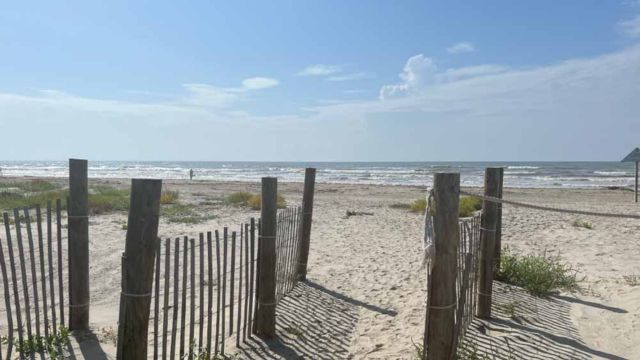Texas has a gorgeous coastline along the Gulf of Mexico, but it’s most known for its huge plains and cowboy culture.
Even though this coastline has beautiful beaches and places to go water sports, it’s vital to be aware of the possible dangers of swimming in the ocean.
We will examine the Texas beaches with the highest frequency of shark sightings and encounters in this post, giving you the knowledge you need to spend a beach day safely.
Shark Attacks in Texas
The latest four shark attacks on South Padre Island have brought attention to Texas. During the July 4 holiday weekend, what is thought to be the same shark bit four different victims.
Although the exact kind of shark remains unknown, witnesses report that it measured six feet in length. While one woman suffered more serious injuries and lost half of her calf, the most of the injuries were minor.
Texas has more than 350 miles of wonderful coastal communities and beaches to visit. However, There has been discussion on the topic of “Are sharks getting closer to the shore and, if so, why?” In Texas, individuals are more afraid to get in the water, regardless of the response.
Although Texas is currently on people’s minds, Hawaii may be the state where shark attacks are most deadly. Texas is now ranked eighth among states with the highest incidence of shark bites.
These are the Texas beaches where reports of shark sightings have been made.
South Padre Island
Prior to the widely reported shark attacks over the July 4 weekend, South Padre Island had a record of shark attacks from 1953 to 2011, all of which resulted in minor injuries.
The majority of shark bites reported on South Padre Island involve swimmers who claim to have been bitten on their foot or leg while surfing or swimming.
In one incident in 2004, a mako shark bit a surfboard but avoided biting the surfer. While South Padre Island may not yet be on lists of American beaches where visitors should be aware of shark safety, recent rounds of injuries may make a difference.
Surfside Beach
The good news is that Surfside Beach has never had a shark attack result in fatality. In 1989, a twelve-year-old boy was bitten by a four-foot-long shark while surfing at Surfside Beach, marking the first known shark attack at the beach.

The following assault happened in 2013. A shark biting while swimming resulted in minor injuries for a 15-year-old boy. In 2016, an aggressive pair of bull sharks attacked an adult male spearfisher at Surfside Beach. This was the most recent shark attack to occur at the beach.
Galveston Beach
When a 14-year-old kid was swimming at night in 1937, he was fatally attacked by a shark at Galveston Beach. In 2010, a male adult fisherman was the victim of the subsequent attack.
Last but not least, a shark reported to be four to five feet long attacked a thirteen-year-old child in 2015, inflicting minor injuries.
Pirates Beach
At Pirates Beach, a three- to four-foot shark of an unidentified species bit a six-year-old girl in the leg. In actuality, records of the shark species involved in the attack are not common.

Prior to it, a 16-year-old kid was bitten on the leg by a shark that was between three and five feet long in 2004. it was the last attack that took place at Pirates Beach. Both kids made it through with relatively minor wounds.
You May Also Read:
- Beach Alert: Contaminated California Beaches You Shouldn’t Visit
- The Risks of This Florida Beach: Why Inexperienced Swimmers Should Avoid It
- Florida’s Lost Key: The Ultimate White-Sand Beach Getaway
Port Isabel
A guy was killed by a shark attack at Port Isabel in 1962 while he was fishing in waist-deep water.
While Hans Fix’s daughters claimed to have witnessed the assault, there are conflicting accounts of his death from a shark bite and suggestions that the incident may not have been properly documented.
They offered their thoughts on the current spate of shark attacks in their community, where they still reside.
Final Thoughts
Even though Texas has had relatively few shark attacks, it’s still important to be aware of the risks and adopt the appropriate safety measures when swimming in the Gulf of Mexico.
Knowing which beaches have higher frequency of shark sightings and encounters will help you make wise choices and have a safe and enjoyable time at the beach.
Always remember that prevention is the key, therefore pay attention to local authorities’ recommendations and safety rules.
By: 6 Texas Beaches With The Most Shark Encounters



Leave a Reply